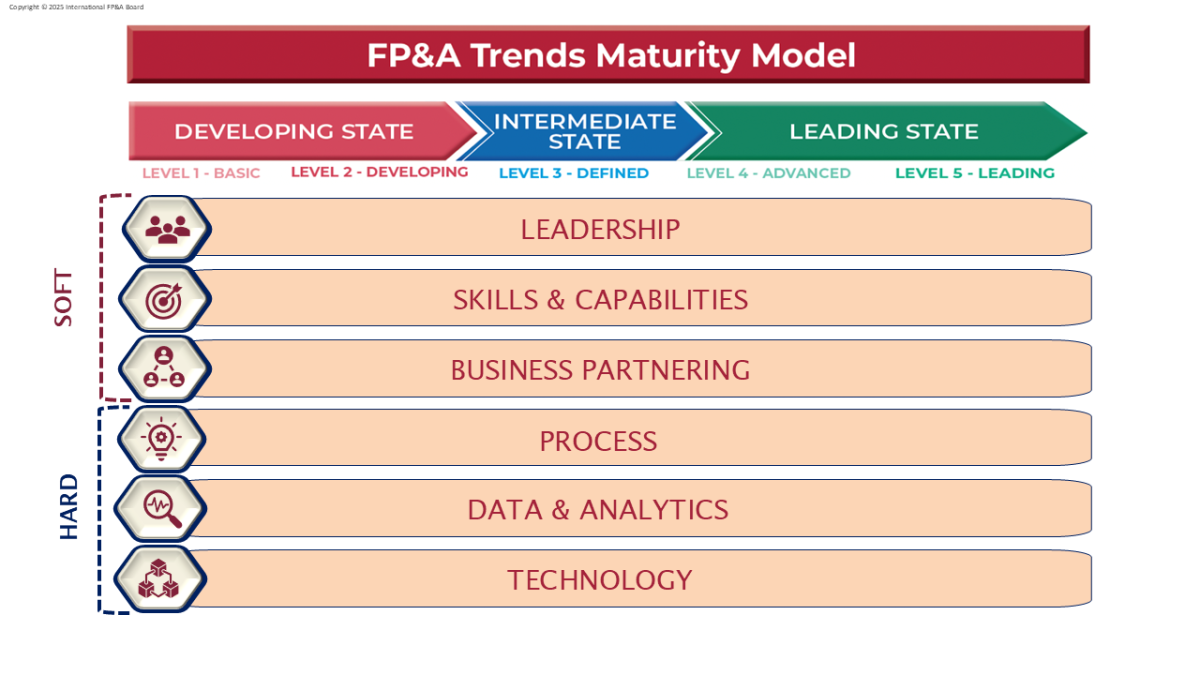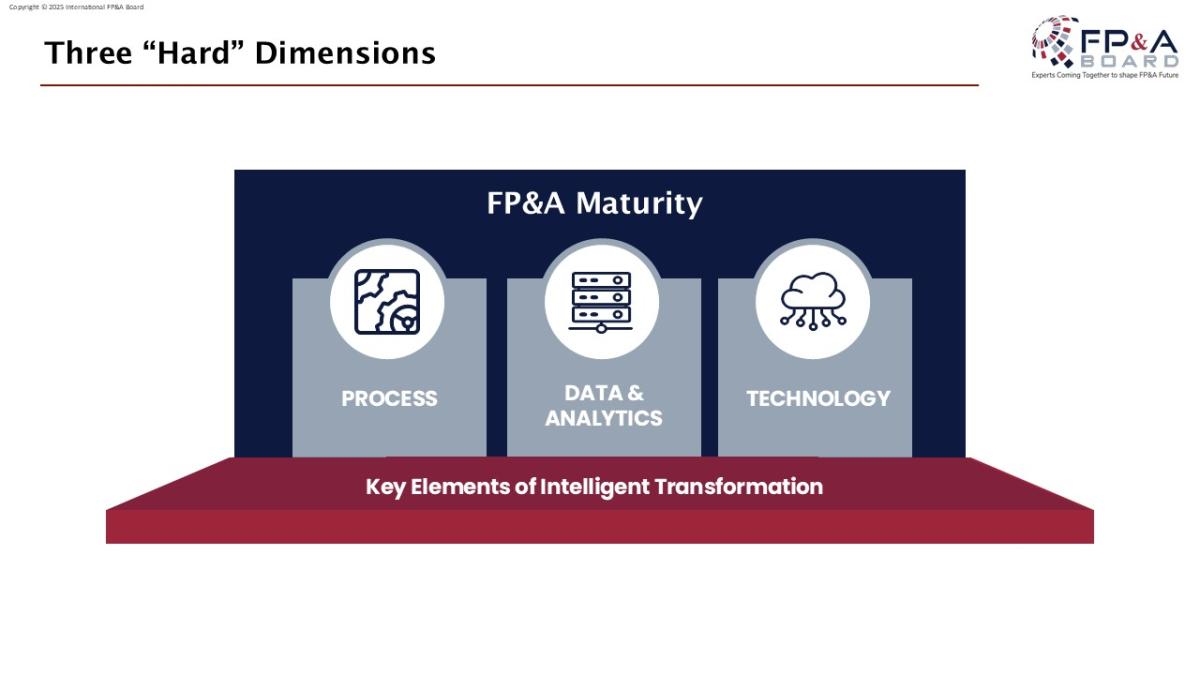Introduction
On March 13th, the 9th Chicago FP&A Board gathered senior finance leaders to discuss the FP&A Trends Maturity Model. Set against the backdrop of Michigan Avenue at the Spaces venue, the event formed the third stop on the Spring 2025 North American Board tour. It was hosted in partnership with Michael Page and IWG, sponsored by SAP, and expertly facilitated by Larysa Melnychuk, Founder and CEO of the International FP&A Board.
The FP&A Trends Maturity Model served as the central framework for the session, helping teams benchmark their current state and identify specific steps to evolve. The conversation centred on a critical question: Where are organisations today in their FP&A transformation journey, and how can they accelerate toward the leading stage?
Why This Topic Matters
FP&A teams worldwide are working to shift from number-centric reporting to becoming true business partners. But this transformation doesn’t happen by accident. The FP&A Trends Maturity Model offers a structured, practical way to evaluate progress. It covers six dimensions (leadership, skills, business partnering, data, process, and technology) across five maturity levels, from Basic to Leading.

Figure 1
The model is both a benchmark and a map: it helps finance teams understand where they are, what’s holding them back, and what actions will move them forward. The Chicago Board was designed to bring this framework to life with an open discussion about the real-world blockers, capabilities, and steps needed to progress.

Figure 2
Polling Insights
Participants assessed their current stage using the FP&A Trends Maturity Model:
The results revealed that most participants placed themselves in the Developing (46%) or Defined (26%) stages, firmly in the middle of the transformation curve. Only 2% reported operating at the Leading level. This distribution underscores a shared reality: for most FP&A teams, true business partnering remains a work in progress.

Figure 3
Key Frameworks and Transformation Enablers
The presentation outlined how teams can move forward using the FP&A Trends Maturity Model as a transformation guide. The model encourages teams to assess and improve across six dimensions, grouped into three “soft” and three “hard” categories.
The soft dimensions — Leadership, Skills & Capabilities, and Business Partnering — focus on the cultural and behavioural enablers of maturity. These shape how FP&A interacts with the business, influences decisions, and cultivates future-ready talent.

Figure 4
The hard dimensions — Process, Data & Analytics, and Technology — represent the structural and technical foundation required to scale insight and drive efficiency.

Figure 5
Transformation is not only technical — it is deeply human. Cultural resistance, lack of role clarity, fragmented systems, and poor data governance often stall progress more than any platform limitation.
Case Study
Matt Poleski, Regional CFO for the Northeast and Mid-Atlantic regions at Arthur J. Gallagher & Co., presented a compelling case study on intelligent FP&A transformation.

Figure 6: Chicago FP&A Board №9 participants, March 2025
He described how his team aligned their finance principles with the FP&A Maturity Model, integrating digital enablement with structured leadership development. Key takeaways included:
- Using technology to expand margin without expanding headcount
- Systematic career and compensation planning tied to business results
- Reinforcing FP&A’s role as both a storyteller and strategic architect
- The balance between creative leadership and operational discipline

Figure 7: Chicago FP&A Board №9 participants, March 2025
Group Work Outputs
Participants were split into three working groups to explore one critical question:
What are the practical steps to reach the Leading stage of FP&A Maturity?
Each group tackled one transformation domain — People & Culture, Systems & Processes, or Data & Models — and summarised their insights.
Group 1: People & Culture
- Secure buy-in from the top and from the bottom
- Establish a strong communication structure
- Promote servant leadership across finance functions
- Encourage intellectual curiosity as a team norm
- Ensure a capability match between roles and expectations
Group 2: Systems & Processes
- Avoid implementing solutions before cleaning the data
- Define processes clearly, focusing on low-hanging fruit
- Clarify project scope to avoid overload and one-size-fits-all approaches
- Address information security risks early
- Provide strong enablement and ongoing training to support adoption
Group 3: Data & Models
- Create a central chart of accounts (CoA) and data governance process
- Map out all data sources across the business
- Use a data warehouse or data lake to consolidate
- Prioritise data scrubbing to reduce complexity
- Regularly review and tune models for speed and accuracy
- Improve scalability using Power BI or similar tools
- Link data directly to models (Excel is still in use, but may limit scale)

Figure 8: Group work at Chicago FP&A Board №9, March 2025
Conclusion
The 9th Chicago FP&A Board underlined a powerful message: maturity is not a static label, but an evolving mindset. With 74% of attendees identifying as either ‘Developing’ or ‘Defined’, the aspiration to reach the ‘Leading’ stage is clear.
The FP&A Trends Maturity Model helped participants benchmark progress and explore concrete actions through frameworks, peer insight, and shared transformation stories. With each board, the path from insight to impact became clearer and more achievable.

Figure 9: Chicago FP&A Board №9 participants, March 2025







